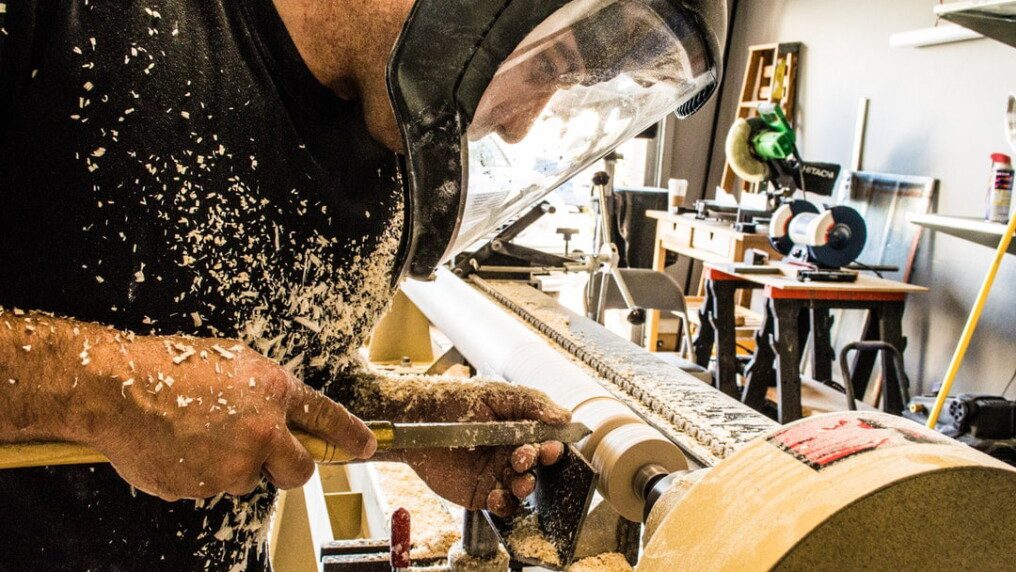
What inspires you to create and build your finest work?
As a carpenter, you know how to transform the mundane into something that’s beautiful to look at. You fix what’s broken and not only make it functional again. You’re passionate about enhancing functionality and aesthetics all at once.
But your carpenter zeal may have hit a wall as of late. You may feel like you’re going through the motions. Or, you may be feeling uninspired or unsure of how to produce better quality work.
Wood plugs are nothing new in the world of carpentry. But they can be the exact thing to help you take your work to the next level. Here’s how you can use plugs to transform your work.
Wooden Plugs: The Signature of Quality Work:
Reinforcing and fastening are usually the last things you’ll do as you complete a project. You likely use nails and screws to reinforce the joints of a structure all the time. Or, you may slap on some wood putty and call it a day.
There’s nothing wrong with using these methods to complete a project. But they can sometimes stand out like eyesores. When people see nails, screws, or wood putty, they can equate it to sloppy work.
No carpenter wants bad impressions to overshadow the true quality of your work. When a carpenter takes the time to install wood plugs, however, it can make all the difference.
The Possibilities Are Endless:
Wood is one of those wonder mediums you can sculpt or build into any size or figure. It’s no different with wooden plugs, which come in an endless variety. Plugs allow you to better blend areas of reinforcing and fastening with wood.
If you need a fastener made out of maple, there’s a plug for that. If you need to hide screws in a floor, there are plugs for that.
Need to add a 3-dimensional embellishment for decoration? There’s definitely a plug for that!
If you haven’t used wood plugs before, it’s good to have a bunch of different ones at your disposal. That way, you can understand the different ways to apply them. You can make them on your own or buy them in bulk.
But how do you install them?
How to Cut, Create, & Install Plugs:
Gathering an array of plugs makes for a good start. Before diving in, there are some additional tools you’ll need in your belt.
It goes without saying that you should have a wood plug cutter handy. Cutters come in different sets that you can apply to hard or soft wood. Most create beveled edges and easily attach to hand drills.
A countersink cutter is also essential if you’ll be making your own wooden plugs. You likely use this to drill holes on a regular basis. It may help to acquire a few bit sizes to make different sized plugs.
You’ll also need the following:
- Hand drill or drill press
- Fastener
- Wood glue
- Chisel
Of course, you’ll need wood (and sandpaper to go with it). You can also use a drill press table if you have one to work with.
Cutting & Drilling:
Apply your plug cutter on a piece of scrap wood. A drill press or table can help you be more accurate. A hand drill will also work fine if you’re practicing or working with small holes.
Drill any number of plugs into the scrap wood. Drill a generous amount of plugs if you’re just practicing.
Pull out the plugs from their holes using a chisel. Use a band saw if you’re working with a drill press table. A flat head screwdriver can also work.
Next, take your countersink and drill holes onto another piece of scrap wood. A flat-bottom bit can create a cleaner cut. But there will always be wood dust to clean away regardless.
Trimming, Installing, & Sanding:
The plugs you’ve created might not fit properly right away. Taking your chisel, file down the edges.
Because plugs are so small, you shouldn’t use a larger saw to cut them. If you’re working with a larger plug, you might be able to use a flush saw or block pane. Practice using these tools with caution.
Once you’ve trimmed the plugs, apply glue to the edges. Before the glue dries, you should fasten the plugs into their designated holes. You should also practice applying the plugs over screws and nails.
If necessary, file down more of the plug once the glue dries. Finally, sand down the plugs for a clean finish.
Ideas for Future Carpentry Projects:
Now that you understand the basics of wood plugs, what will you create?
As you’re starting out, make it a habit to install plugs instead of wood putty. The more you practice using them, the better you’ll get at applying them. You’ll also create a long line of happy clients in the process.
As far as bigger projects go, think about how you can apply your carpentry skills to revamp your own home.
Let’s say you’re considering interior design ideas for your living room. Geometric patterns are all the rage right now, for example. You could create a geometric wooden shelf to hang above your couch.
You would certainly need to reinforce a geometric shelf with putty or screws. But this project (or a similar one) provides ample opportunity to practice using plugs.
Or, if you have children, you could build a wooden playset. Not only would you need to install plugs to prevent cuts from protruding screws. You could also practice decorating the outside of the playset with plugs.
Take Your Craft to the Next Level with Wood Plugs:
Carpentry is a craft that has and will always stand the test of time. There is so much potential to evolve your craft…and it all begins with working to take your work to new heights.
Wood plugs may seem trivial in comparison to the real work at hand. But they are the signature of quality work that clients will always remember you by.
Looking for more ideas to inspire your carpentry? Check out our home & garden blog for more!
Read Also:




























